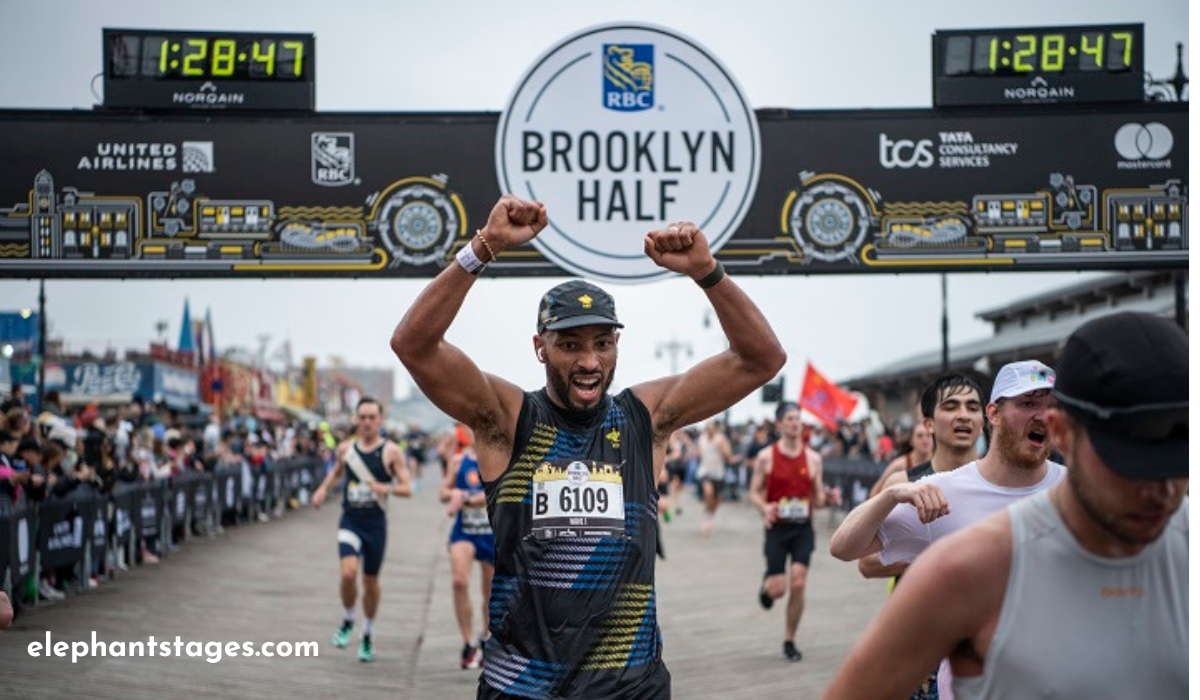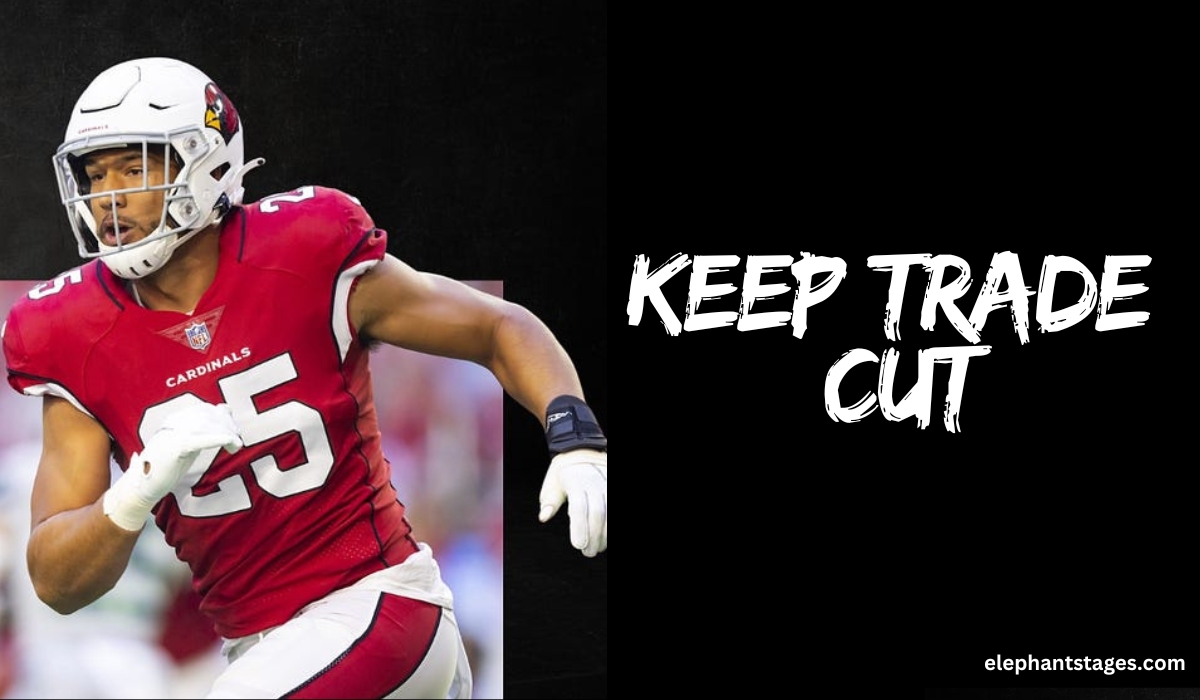Sports
The Ultimate Guide to US Half Marathons in 2024-2025: Hundreds of Races Await!

Welcome to the ultimate guide designed to be your one-stop shop for finding the perfect half marathon in the United States throughout 2024 and 2025. Whether you’re a seasoned runner or a beginner looking for your first challenge, we’ll help you discover hundreds of races across the country. This comprehensive guide is crafted to cater to half marathon enthusiasts, beginner runners, and the fitness community at large.
Massive List of US Half Marathons Near Me
In this section, we have compiled a robust calendar of half marathons happening across all 50 states. This list will be categorized by date, location, and race type to help you find the perfect race that fits your preferences and schedule.
By Date
Planning your running season is crucial for maintaining a consistent training regimen and allowing for adequate recovery time. Here’s a glimpse at some half marathons happening throughout the year:
January – March
- Disney World Half Marathon (Florida): Kick off the year with a magical race through Disney World.
- Rock ‘n’ Roll Arizona Half Marathon (Arizona): Enjoy a lively race with music at every mile.
- Austin Half Marathon (Texas): A great early-season race with a scenic city course.
April – June
- Boston Run to Remember (Massachusetts): Honor first responders with a race through historical Boston.
- Cherry Blossom Ten Mile Run (Washington, D.C.): Experience the beauty of cherry blossoms in full bloom.
- San Diego Rock ‘n’ Roll Half Marathon (California): Run along the picturesque San Diego waterfront.
July – September
- Chicago Half Marathon (Illinois): A summer favorite known for its flat and fast course.
- Napa-to-Sonoma Wine Country Half Marathon (California): Run through beautiful vineyards and enjoy wine tasting.
- Boise River Run Half Marathon (Idaho): Enjoy a scenic route along the Boise River.
October – December
- Marine Corps Historic Half Marathon (Virginia): A fall race with military precision and scenic views.
- Las Vegas Rock ‘n’ Roll Half Marathon (Nevada): Run the iconic Las Vegas Strip at night.
- Seattle Half Marathon (Washington): End the year with a race through the Pacific Northwest’s largest city.
By Location
Searching for races in specific states or regions can help you find events near you or explore new destinations. Here are some top picks by region:
Northeast
- New York City Half Marathon (New York): A must-do race through the Big Apple.
- Philadelphia Love Run (Pennsylvania): Known for its enthusiastic crowds and historic landmarks.
Midwest
- Detroit Free Press Half Marathon (Michigan): Run across an international border into Canada and back.
- Twin Cities Half Marathon (Minnesota): Experience the beauty of Minneapolis and St. Paul in one race.
South
- Miami Half Marathon (Florida): Enjoy warm weather and ocean views.
- Nashville Rock ‘n’ Roll Half Marathon (Tennessee): A lively race through Music City.
West
- Portland Half Marathon (Oregon): A scenic urban race with a laid-back vibe.
- Big Sur Half Marathon (California): Run along one of the most stunning coastal routes in America.
By Race Type
Discover half marathons with various themes or features, such as scenic courses, charity events, or flat and fast courses for setting personal records.
Scenic Courses
- Maui Oceanfront Half Marathon (Hawaii): Breathtaking ocean views with every step.
- Moab Half Marathon (Utah): Run through the stunning red rock landscapes of Moab.
Charity Events
- St. Jude Memphis Half Marathon (Tennessee): Support the life-saving mission of St. Jude Children’s Research Hospital.
- Susan G. Komen Race for the Cure Half Marathon (Multiple Locations): Run to support breast cancer awareness and research.
Flat and Fast Courses
- Chicago Half Marathon (Illinois): Ideal for setting a personal record with its flat terrain.
- Phoenix Half Marathon (Arizona): Another PR-friendly race with minimal elevation changes.
Beyond the Basics
We go beyond just listing races. Our guide will also provide you with valuable details for each race, such as:
Links to Race Websites
Easily access all the official information for each race, including registration details, course maps, elevation profiles, and reviews from past participants. This ensures you’re fully prepared and informed before committing to any race.
Additional Search Filters
Narrow down your search by filtering races based on specific criteria, such as difficulty level, time of year, or amenities offered. Whether you’re looking for a challenging hilly course or a race with excellent on-course support, our filters have you covered.
Tips for Choosing Your Perfect Race
Selecting the right half marathon can make a huge difference in your experience and performance. Here are some tips to help you make informed decisions:
What to Consider When Picking a Race
- Course Difficulty: Evaluate the elevation profile and terrain. Flat courses are great for PRs, while hilly courses offer a rewarding challenge.
- Weather: Consider the typical weather conditions for the race location and time of year.
- Location: Decide if you want a local race or are willing to travel for a unique experience.
- Support and Amenities: Look for races that offer good on-course support, such as hydration stations, medical aid, and post-race refreshments.
Training Tips
Preparing for a half marathon requires dedication and a structured training plan. Here’s how to get started:
- Train Consistently: Follow a training plan that builds your mileage gradually to prevent injury.
- Incorporate Cross-Training: Include activities like cycling, swimming, or strength training to improve overall fitness.
- Listen to Your Body: Rest and recovery are just as important as your training runs. Don’t ignore signs of overtraining.
Race Day Essentials
Ensure a smooth and successful race day with this checklist:
- Gear: Wear tried-and-tested running shoes and comfortable clothing suitable for the weather.
- Nutrition: Bring energy gels or snacks and stay hydrated.
- Race Pack: Ensure you have your race bib, timing chip, and any required identification.
- Plan Your Morning: Arrive early to familiarize yourself with the starting area and warm up properly.
Target Audience
This guide caters to runners of all levels in the United States who are interested in participating in a half marathon in 2024 or 2025. It’s ideal for:
- Beginner runners looking for their first half marathon challenge.
- Seasoned runners seeking new and exciting races to add to their calendar.
- Runners who want to find races in specific locations or with unique themes.
The Benefit
By using this guide, runners will have all the resources they need to find the perfect US half marathon for their goals and preferences. They’ll be able to efficiently search for races, learn valuable details about each event, and gain insights to ensure a successful running experience
YOU MAY ALSO LIKE
CCrackstreams.net: Your Ultimate Destination for Live Sports Streams
Conclusion
Whether you’re a novice runner or a seasoned marathoner, finding the right half marathon is essential for an enjoyable and successful race experience. With our ultimate guide to US half marathons in 2024-2025, you have everything you need to discover the perfect race, prepare effectively, and achieve your personal best.
Ready to take the next step in your running journey? Dive into our comprehensive list, explore the races that excite you the most, and start planning your running season today!
FAQs
1. What is the best half marathon for beginners in the US?
The Chicago Half Marathon (Illinois) is ideal for beginners due to its flat terrain and supportive atmosphere.
2. How do I choose the right half marathon for me?
Consider factors such as course difficulty, weather conditions, location, and on-course support when picking a race.
3. What should I bring on race day?
Be sure to bring your race bib, timing chip, identification, tried-and-tested running shoes, comfortable clothing, energy gels, and hydration.
4. How should I train for a half marathon?
Follow a structured training plan that builds mileage gradually, includes cross-training, and incorporates rest and recovery periods.
5. Are there half marathons for charity in the US?
Yes, races like the St. Jude Memphis Half Marathon (Tennessee) and the Susan G. Komen Race for the Cure Half Marathon support charitable causes.
Sports
The Ultimate Guide to Finding the Perfect Fit for Women’s Pickleball Shoes

Are you struggling to find the right women’s pickleball shoes?
Picking the perfect pair can make a huge difference in your game. Discover how to choose the best shoes that will enhance your performance on the court.
Keep reading to learn more and get ready to step up your game!
Assess Your Court Surface
Different pickleball courts have different surfaces. The type of court you play on will affect which shoes are best.
Hard courts, such as concrete, need shoes with a durable sole. These shoes help protect your feet and give you enough grip to move quickly.
For clay or grass courts, you need shoes with better traction. They help you keep your balance while playing.
Knowing your court surface helps you pick the right pickleball shoes for women. This can boost your game and keep your feet safe. Always choose shoes that match your court type.
Prioritize Comfort
Comfort is key when picking your pickleball shoes. Your shoes should feel good when you wear them. If your shoes are too tight or too loose, you could hurt your feet or get blisters.
Look for shoes with soft insides and good support. This helps keep your feet comfortable during long games. Make sure the shoes have a good fit around your toes and heels.
You should be able to move your toes easily. A good pair of shoes can make a big difference in how you play the game. If you don’t know where to start looking, you can check out websites like https://novelship.com.
Consider Shoe Weight
The weight of your pickleball shoes is very important. Shoes that are too heavy can slow you down. Look for shoes that feel light on your feet. Lighter shoes help you move faster and feel less tired.
Make sure the shoes still give you enough support. You don’t want shoes that are too thin or flimsy. Good pickleball shoes balance light weight with strong support.
Check the shoe weight before you buy. Light shoes can help you play better and keep your feet feeling good.
Look for Durability
Durability matters when picking the best pickleball shoes. You want shoes that will last a long time. Good shoes made of strong materials can handle the wear and tear of many games.
Check the sole of the shoe. It should be thick and strong. The upper part of the shoe should also be well-made.
Stitching should be tight and neat. Durable shoes save you money because you won’t need to buy new ones often.
Check for Proper Fit
Getting the right fit is very important. Your pickleball shoes should not be too tight or too loose. Shoes that fit well can help you move better on the court.
Make sure your toes have enough room to wiggle. The heel should stay in place and not slip.
Try to walk and run a bit when you try on new shoes. This way, you can see if they feel good. Good-fitting shoes help you play better and keep your feet safe from injury.
Find the Best Fit for Women’s Pickleball Shoes Today
Finding the right women’s pickleball shoes can boost your game and keep you comfortable on the court. Take the time to try on different pairs and choose the ones that feel best.
With the right shoes, you’ll play better and enjoy the game more. So get out there and find your perfect pair today!
Did you find this article helpful? Then check out our blog for more advice, tips, and insights!
Sports
Drawing:Cul23ybyzfm= Basketball – A Creative Guide for Basketball Enthusiasts and Artists

Introduction Drawing:Cul23ybyzfm= Basketball
There’s something magical about the intersection of sports and art. When you capture the essence of basketball on paper, it’s not just about drawing figures or scenes; it’s about conveying the energy, motion, and excitement of the game. Whether you’re a basketball enthusiast, an artist looking to explore new themes, or a sports blogger wanting to add a creative touch to your content, basketball-themed art offers endless possibilities. In this guide, we’ll walk you through everything you need to know to create stunning basketball drawings that leap off the page.
Materials and Tools
Essential Tools for Basketball Art
Before you start drawing, it’s important to gather the right materials. Quality tools can make a significant difference in the outcome of your artwork. Here are some essentials to get you started:
- Quality Paper: Opt for a sketchbook or drawing pad with smooth, thick paper. This will help handle the shading and detailing without bleeding or tearing.
- Pencils: A range of pencils from H (hard) to B (soft) will allow you to create different shades and textures. A 2B pencil is great for general sketching, while a 6B pencil can be used for deep shadows.
- Markers and Pens: Fine liners and markers are excellent for outlining and adding bold details. Brands like Micron and Copic offer a variety of tips and vibrant colors.
Specialized Materials for Dynamic Action Scenes
Capturing the dynamic energy of basketball requires some specialized tools:
- Blending Stumps: These help in creating smooth transitions between shades and adding depth to your drawings.
- Colored Pencils: To add vibrancy and realism, colored pencils can be used for uniforms, the basketball, and even the court.
- Digital Tools: If you prefer digital art, tools like a graphic tablet and software like Procreate or Adobe Illustrator can offer endless possibilities for creating intricate designs and animations.
Depicting Movement and Action
Tips for Capturing the Fluidity and Energy
Drawing static figures is one thing, but capturing the fluidity and energy of basketball is another challenge entirely. Here are some tips:
- Study Real Games: Watch live games or recordings to observe how players move. Pay attention to body language, the bend of the knee during a jump, or the angle of the arm while shooting.
- Quick Sketches: Practice quick, rough sketches to capture motion. These don’t need to be detailed but should focus on the general movement and flow.
- Gesture Drawing: Focus on the overall action rather than the details. Use loose lines to sketch the basic shapes and poses of players in action.
Techniques for Drawing Various Basketball Moves
Dribbling
- Focus on the Hands and Ball: The hand positioning and the way the ball interacts with them are crucial. Draw the ball slightly deformed to convey the impact and motion.
- Legs and Feet: One foot should be forward, and the other slightly back, showing the player in mid-motion.
Shooting
- Body Angles: Capture the tension in the player’s body as they prepare to shoot. The arm should be extended, and the fingertips should be just touching the ball.
- Facial Expression: A focused expression adds realism and emotion to the shot.
Dunking
- Exaggeration: Don’t hesitate to exaggerate the jump height and the stretch of the player’s body to emphasize the dramatic nature of a dunk.
- Movement Lines: Add lines around the player to suggest the swift motion and energy of the dunk.
Infusing Realism with Shading and Detail
Guide on Using Shading to Create Depth and Realism
Shading is what brings your drawing to life. Here’s how you can master it:
- Light Source: Determine where your light is coming from. This will help you understand where the shadows and highlights should be.
- Layering: Start with light shades and gradually build up to darker ones. This creates a more natural look.
- Contrast: Use high contrast to make key elements stand out. A well-shaded basketball, for instance, will draw immediate attention.
Tips for Adding Intricate Details
Facial Features
- Eyes and Expression: The eyes are the focal point of any face. Spend extra time making them detailed and expressive.
- Sweat and Texture: Small details like sweat or texture on the uniform can add a layer of realism.
Uniform and Accessories
- Fabric Folds: Pay attention to how fabric folds and creases, especially around joints and during movement.
- Logos and Numbers: Adding the team’s logo or the player’s number can make your drawing more authentic and recognizable.
- YOU MAY ALSO LIKE
- Celebrating UConn Women’s Basketball: A Comprehensive Guide to The Uconn Boneyard
Conclusion
Creating basketball-themed art is not just an exercise in drawing; it’s a means of expressing the dynamism and passion of the game. By using the right materials, capturing the fluidity of movement, and adding realistic shading and details, you can create artwork that resonates with viewers. We hope this guide has equipped you with the knowledge and inspiration needed to start your basketball art journey.
Remember, like any skill, practice and patience are key. Keep drawing, keep experimenting, and most importantly, enjoy the process. If you’re proud of your artwork, share it with our community. We’d love to see your unique take on capturing the spirit of basketball.
Frequently Asked Questions
1. What materials do I need for basketball-themed art?
You’ll need quality paper, a range of pencils, markers, blending stumps, colored pencils, and, optionally, digital tools.
2. How can I capture movement in basketball drawings?
Study real games, practice quick sketches, and focus on gesture drawing to effectively depict fluidity and energy.
3. What shading techniques help create depth?
Determine your light source, layer shades gradually, and use contrasting highlights and shadows to enhance realism.
4. How should I depict specific basketball moves like dunking?
Exaggerate the jump height and use movement lines to convey energy. Capture body tension for more dynamic poses.
5. Are there any tips for adding details to facial expressions?
Spend extra time on the eyes and expressions, and include small features like sweat on the face or texture on the uniform.
Sports
Mastering Dynasty Fantasy Football with Keep Trade Cut Strategy

Are you ready to take your Dynasty Fantasy Football game to the next level? Whether you’re new to dynasty leagues or a seasoned veteran, understanding the Keep Trade Cut (KTC) strategy can significantly enhance your team’s performance. This blog post will guide you through the intricacies of Keep Trade Cut, helping you build a competitive team year after year. Let’s kick off this masterclass!
What is Dynasty Fantasy Football?
The Basics
Dynasty Fantasy Football is a long-term commitment that mirrors real NFL franchises. Unlike traditional redraft leagues where you draft a new team each year, in dynasty leagues, you retain most of your roster from season to season. This means long-term planning and player development are crucial elements.
The Importance of Long-Term Planning
In dynasty leagues, it’s not just about winning this season; it’s about setting your team up for sustained success. You’ll need to consider factors like player age, contract lengths (if applicable), and team situations. This makes every decision—from draft picks to trades—more impactful.
The Keep Trade Cut Philosophy
Core Concept
The Keep Trade Cut (KTC) approach is a fundamental strategy for managing a dynasty roster. Essentially, Keep Trade Cut involves deciding whether to:
- Keep players on your roster.
- Trade them for assets.
- Cut them to make room for new talent.
Mastering this philosophy helps optimize your team’s success by making informed decisions based on player value, performance, and future potential.
Benefits of Mastering Keep Trade Cut
- Build a Competitive Team: Year after year, Keep Trade Cut helps you maintain a strong roster.
- Navigate Rookie Drafts and Free Agency: Enhance your ability to pick valuable rookies and free agents.
- Understand Player Value Fluctuations: Know when to hold onto a player and when to move on.
- Maximize Trade Opportunities: Propose fair and valuable deals that benefit both parties.
Who Should Read This Guide?
This guide is perfect for Dynasty Fantasy Football players of all experience levels. New players can learn the fundamentals of Keep Trade Cut, while experienced players can refine their decision-making process. Even casual players will find valuable insights that can improve their game.
Core Principles of Keep/Trade/Cut
Player Evaluation: The Foundation of Keep Trade Cut
Evaluating players goes beyond just raw statistics. Here are key metrics to consider, summed up as TOAST (Talent, Opportunity, Age, Situation, Athleticism).
Talent
Understanding a player’s natural ability and potential for development is crucial. Look for players who show exceptional skills and have the potential to grow in their careers.
Opportunity
Analyze a player’s role within their team’s offense or defense. Players with more opportunities to touch the ball or make plays are generally more valuable.
Age
The impact of age on player performance varies by position. For example, running backs often peak earlier than wide receivers. Keep this in mind when evaluating your roster.
Situation
Consider the team’s overall competitiveness, coaching schemes, and quality of the offensive or defensive line. A talented player in a poor situation may not perform as well.
Athleticism
Assess physical skills relevant to a player’s position, such as speed, agility, and catching radius. These attributes can make a significant difference in a player’s effectiveness.
The Keep Decision
Ideal Candidates to Keep
Young, high-potential players at valuable positions (RB1s, WR1s, elite QBs, TEs) are strong candidates to keep. These players are likely to contribute significantly to your team’s success.
Contract Length and Salary Cap
In leagues with salary caps, consider the length of player contracts and their financial impact. Keeping a high-value player with a manageable contract can be advantageous.
Roster Depth
Examine the depth of your roster at each position. If you have a surplus of talent in one area, it might be wise to trade some players for assets in weaker areas.
The Trade Decision
Identifying Ideal Trade Targets
Look for players with high upside who fit your team’s needs. Trading for young talent or draft picks can help you build for the future.
Creating Win-Win Trades
Ensure that your trade proposals offer fair value to both parties. Building trust with other league members can make future trades easier to negotiate.
Trade Scenarios
Different trade scenarios include acquiring young talent, consolidating positions, or acquiring draft picks. Tailor your strategy to your team’s specific needs and long-term goals.
The Cut Decision
Clear Cut Candidates
Identify players who are clear-cut candidates for release. These might include aging veterans with declining performance, players with limited opportunity, or those with significant injury concerns.
Objective Decision-Making
It’s essential to make objective decisions, even if you have an emotional attachment to certain players. This will help you maintain a competitive roster.
Stash Candidates
Consider “stashing” young players with upside who might be buried on depth charts but could become valuable in the future. These players can be long-term assets for your team.
Advanced Keep Trade Cut Strategies
Dynasty Rookie Drafts
Rookie drafts are a critical component of building a successful dynasty team. Here’s how to approach them effectively.
Pre-Draft Preparation
Research rookies thoroughly, understand your team needs, and utilize draft rankings. This preparation will help you make informed decisions during the draft.
Drafting Strategies
Target elite prospects at skill positions in the early rounds and look for value picks in the later rounds. Consider rookie landing spots and team situations when making your selections.
Dynasty Free Agency
Free agency is another avenue for improving your team. Here’s how to make the most of it.
Identifying Undervalued Players
Look for undervalued players or potential breakout candidates. Monitoring waiver wires and staying informed about player performance can help you find these diamonds in the rough.
Risks of Free Agency Pickups
Be aware that not all free agency pickups will pan out. Some players may not see significant playing time, so prioritize pickups based on your roster needs and their opportunity.
Contract Extensions & Salary Cap Management
For leagues with contract extensions and salary caps, managing these aspects is crucial for long-term success.
Impact on Salary Cap
Understand how contract extensions affect your salary cap and future roster flexibility. Making strategic decisions in this area can give you a competitive edge.
Strategies for Extensions
Consider extending high-value players with manageable contracts and releasing those who are overpaid relative to their performance. This will help you maintain a balanced and competitive roster.
Conclusion
By mastering the Keep/Trade/Cut strategy, you can significantly enhance your Dynasty Fantasy Football team’s performance. Player evaluation, informed decision-making, and strategic planning are the keys to long-term success. Whether you’re a new player or an experienced veteran, applying these principles will help you build a competitive team year after year.
Don’t wait to take your game to the next level. Start implementing the Keep Trade Cut strategy today and see the difference it makes. Happy drafting!
Explore more strategies and tips on our website, and join our community of dedicated fantasy football enthusiasts. Together, let’s dominate the league!
Frequently Asked Questions (FAQs)
1. What is the Keep/Trade/Cut (Keep Trade Cut) strategy in Dynasty Fantasy Football?
The Keep Trade Cut strategy involves evaluating players to decide whether to keep, trade, or cut them based on factors like age, performance, and potential.
2. How do you evaluate players for the Keep/Trade/Cut strategy?
Consider factors such as opportunity, age, situation, and athleticism when evaluating players for your dynasty team.
3. What are some key tips for making good trade decisions?
Identify high-upside trade targets, ensure that trades provide fair value to both parties, and tailor trade scenarios to your team’s needs.
4. How should I approach rookie drafts in a dynasty league?
Prepare thoroughly by researching rookies, understanding team needs, and using draft rankings. Target elite prospects early and value picks later.
5. How can salary cap management impact my dynasty team’s success?
Effective salary cap management involves extending high-value players, releasing overpaid ones, and making strategic contract decisions for long-term success.
-

 News3 months ago
News3 months agoWhat Are the Biggest Challenges in Marine Construction Projects in Australia?
-

 Health4 months ago
Health4 months agoUnderstanding Ftmç: Gender-Affirming Surgery
-

 Fashion3 months ago
Fashion3 months agoAttractive Beach Dresses: Elevate Your Look with These Ideas
-

 Tech3 months ago
Tech3 months agoAiyifan: Unveiling the Genie of Technological Revolution
-

 Business3 months ago
Business3 months agoHow Professional Concrete Cleaning Wins Repeat Business
-

 Tech4 months ago
Tech4 months agoThe Ultimate Guide to the Geekzilla Podcast: Diving into the Heart of Geekdom
-

 Pets2 months ago
Pets2 months agoPawsitively Perfect: The Types of Dog Harness Bundle for Your Furry Friend
-

 Health3 months ago
Health3 months agoDesk Job Dilemma: Tips for Back Pain Relief
